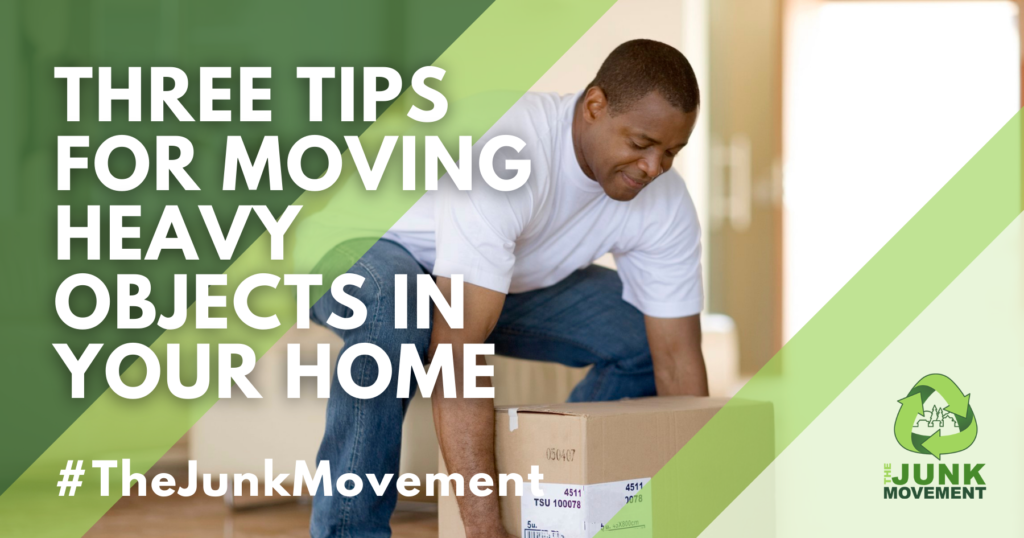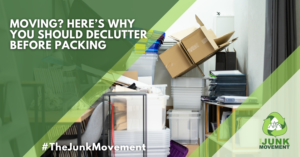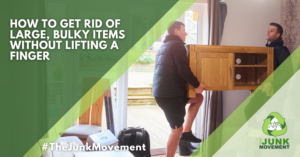Everybody loves moving day!! (said no one in the history of humankind). While we always think it’s best to leave the heavy lifting to a professional. Moving heavy objects a couple of inches or needing to get them out the door to be picked up onto a truck. In this blog, we will give you our best advice to make moving your items as easy as possible and save your back from possible injury.
Remember: Never strain your body past its limits and stop if you feel any discomfort. It’s always better to wait for help than to injure yourself trying to move things alone.
Tip #1: Use moving equipment to your advantage
There are a few tools you can use to help make your moving experience much easier, these gadgets make use of the laws of physics to take some of the load off. Look for them at your local hardware store, moving supply store, department store, or check online retailers such as Amazon.
- Moving straps: Moving straps help distribute the weight of the object you are carrying which reduces lifting effort. Their length can usually be adjusted to accommodate different-sized objects which means you can use them to move small to extra-large heavy objects. When shopping for moving straps, you may come across different variations of straps that secure to your forearms, around the back of your neck, or across your shoulders to provide different support. Moving straps are an excellent tool for moving heavy objects.
- Furniture sliders: Furniture sliders help you move heavy objects by reducing friction between your object and the floor. Make moving easier and protect your floors by using furniture sliders that allow you to push and pull your objects instead of lifting them which can be harder on your body. Moving straps are an excellent tool to help you move heavy objects. Furniture sliders are easy to transport and are sold for both carpeted and hardwood floors so you can use them anywhere!
- Furniture dollies: Furniture dollies come in a couple of different variations, but their main selling point is that they have a wheeled base that you can prop your item onto to easily transport across any terrain. These are great for use in elevators or for when you need to move your furniture more than a couple of feet (into another room, for example).
- Moving Blankets: Moving blankets are perfect for preventing dings and scratches, whether that’s to your objects or to your walls as you maneuver where you want to go. While they won’t make your objects any lighter, they will allow you to use straps, dollies, and other techniques to make moving easier without causing any damage.
Tip #2: Disassemble furniture into smaller pieces when possible
Most furniture comes in at least a couple of pieces for this very reason. A basic toolkit from the hardware store should have everything you need to disassemble your big items into more manageable components. Taking this extra step before attempting to move things in one piece can save you the struggle of getting awkwardly shaped items through doorways and significantly lighten your load.
Tip #3: Use proper lifting techniques and posture
If you decide to try and lift anything without the help of a specialized tool, make sure you use proper lifting posture to reduce the risk of injury. Whenever possible, ask a second person to help cut the load in half. Some basic lifting techniques include:
- Keep a wide base of support. Your feet should be shoulder-width apart, with one foot slightly ahead of the other (karate stance).
- Squat down, bending at the hips and knees only. If needed, put one knee to the floor and your other knee in front of you bent at a right angle (half kneeling).
- Keep good posture. Look straight ahead, and keep your back straight, your chest out, and your shoulders back. This helps keep your upper back straight while having a slight arch in your lower back.
- Slowly lift by straightening your hips and knees (not your back). Keep your back straight, and don’t twist as you lift.
- Hold the load as close to your body as possible, at the level of your belly button.
- Use your feet to change direction, taking small steps.
- Lead with your hips as you change direction. Keep your shoulders in line with your hips as you move.
- Set down your load carefully, squatting with the knees and hips only.
Remember:
- Do not attempt to lift by bending forward. Bend your hips and knees to squat down to your load, keep it close to your body, and straighten your legs to lift.
- Never lift a heavy object above shoulder level.
- Avoid turning or twisting your body while lifting or holding a heavy object.
(Via: Proper Lifting Technique (alberta.ca)
Conclusion
At the end of the day, the most important thing is that you do not get hurt. Whether you need to move heavy objects for disposal, are rearranging furniture after decluttering, or are moving houses/apartments, these tips will improve your experience. And remember, The Junk Movement movers and junk removal specialists are just one call away to offer a helping hand. Call today or book online to schedule your appointment!




